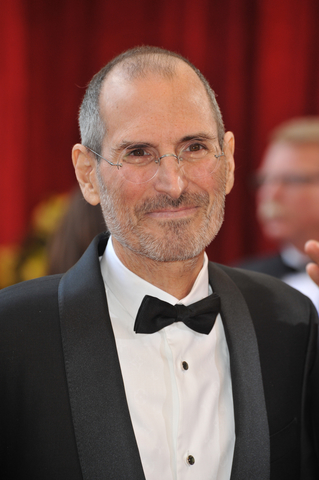Last night, my wife and I (and some friends) attended a live performance by Sinbad, the comedian. It was the first time I had done that.
Yes, I went to a handful of comedy clubs years ago, and was usually entertained by the “hit or miss” collection of comedic “hopefuls” who performed in those venues. However, I have never seen a live performance by a comedian of Sinbad’s caliber.
As the audience waited for his appearance, there was no warm-up act. Indeed, the starkly bare stage contained only a stool and a microphone stand.
However, once he came on stage, he spent 2.5 hours (with no break!) hilariously engaging a rapt audience with (seemingly) unscripted, ad-libbed observations; continually improvising off of questions he threw out to the audience. I found it remarkable.
The list of top 10 fears for an average American includes “fear of public speaking” (glossophobia). So, the average American would be deathly afraid of standing on such a stage. Even a seasoned professional might cringe at the thought of facing several thousand unknown people with no podium, no script, no PowerPoint slides, no band, no backup, no props, no stage hands, no supporting actors, no Teleprompter, no orchestra, no press secretary, no staff. However, Sinbad was clearly in his element, and owned the moment.
Afterward, I asked a friend if he thought that Sinbad spent any time preparing for each performance, or whether he just walked on stage and started rolling. The ensuing conversation led us to remember observations from the book, Outliers, by Malcolm Gladwell. Outliers examines the stories told about extremely successful people. Such stories typically focus on intelligence and ambition as the key success factors for these well known people. However, in Outliers, the author probes the other (often unknown) contextual factors which contributed to the success of those individuals.
Gladwell points out that, even in a forest, “the tallest oak…is the tallest not just because it grew from the hardiest acorn; it is the tallest also because no other trees blocked its sunlight, the soil around it was deep and rich, no rabbit chewed through its bark as a sapling, and no lumberjack cut it down before it matured.”
Similarly, for successful people, there were situational contexts which contributed to their successes:
- In 1960, while the Beatles were still just a struggling high school rock band in Liverpool, they happened to be invited to play at some low-paying, low-life clubs in Hamburg, Germany. In a typical club, they had to play for 5-8 hours a night, 7 days a week. The sheer amount of performance time increased their skill and their confidence. Indeed, in 1.5 years they performed 270 nights! “By the time they had their first burst of success in 1964… they had performed live an estimated 1200 times; [whereas] most bands today don’t perform 1200 times in their entire careers. The Hamburg crucible is one of the things that set the Beatles apart” and helped them hone their craft to a remarkable level. The Beatles put in their time and were prepared to succeed, if an opportunity presented itself. By the time they launched in the United States, they had spent over 10,000 hours honing their craft. [Indeed, the legendary album “Sergeant Pepper’s Lonely Hearts Club Band” was not released until 10 years after the Beatles were founded.]
- In 1968, “as a precocious and easily bored eighth grader,” Bill Gates’ parents “sent him to Lakeside, a private school that catered to Seattle’s elite families. Midway through Gates’ second year at Lakeside, the school started a computer club.” This was an amazing thing, because, in the 1960’s, most colleges did not even have computer clubs; let alone a high school! Even more amazing was the fact that Gates was given free (!), unlimited (!) access to a time-sharing terminal with a direct link to a mainframe computer in downtown Seattle. This was a remarkably-advanced setup for an era in which, even if you had access to a computer, you typically programmed by utilizing laborious computer punch cards! And time-share access was typically very expensive. During the next five years, Gates lived in the computer club room, and did other computer-oriented commercial and academic activities. “By the time Gates dropped out of Harvard after his sophomore year to try his hand at his own software company, he’d been programming practically nonstop for seven consecutive years,” logging, in the process, more than 10,000 hours honing his craft (before most of the world even knew that such a craft existed).
- Other successful individuals mentioned by Gladwell include Bill Joy, Warren Buffett, Carlos Slim, John D. Rockefeller, Andrew Carnegie, Henry Ford, Sam Walton, Cleopatra, Prince Al-Waleed bin Talal, Steve Jobs, Eric Schmidt, etc. Gladwell also explores: Why certain demographic groups became dominant in merger and acquisition law; Cultural legacies which increased the incidence of jet plane crashes among certain airplane pilots; The lessons learned in rice paddies which increased one culture’s performance in math; Etc.
But the question I want to put to you is, Have you put in your 10,000 hours, yet?
You may have looked at folks like Sinbad, Gates, The Beatles, Capt. “Sully” Sullenberger, or whoever your heroes are, and envied them for their brilliance. Yes, it is undeniable that they have fabulous levels of ability. But what they also had was a series of experiences (and setbacks!) which allowed them to put in 10,000 hours (and more!) to hone their craft to a point where they were head-and-shoulders-above others in their field. Even then, “success” did not appear until a variety of “happenstantial” circumstances created an opportunity for them to strut their stuff.
So get out there. Do your thing. Learn from your successes and failures. Learn from the successes and failures of others. Put in your 10,000 hours. And become a successful Outlier in your field.
Additional contact info:
Web: www.TKGweb.com, Twitter: @tonyparham
